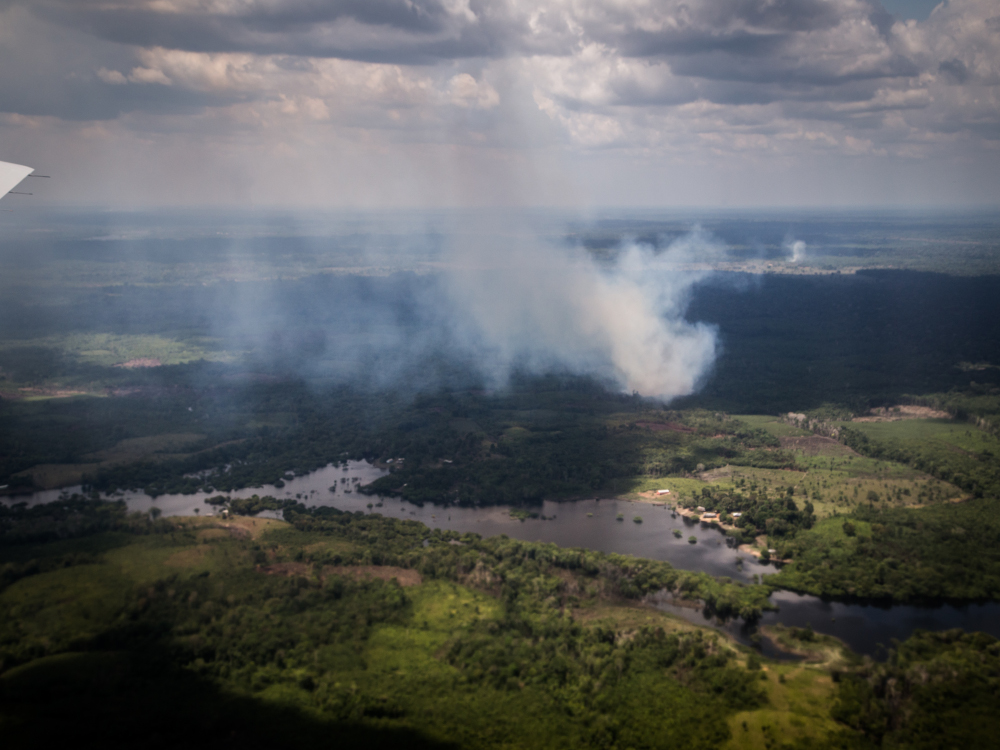Scientists Uncover Source of Tiny Amazonian Particles
Published: 17 November 2020
GoAmazon field campaign straddled natural, urban environments in Brazil
A study recently published by the Proceedings of the National Academy of Sciences (PNAS) untangled the long-standing mystery of aerosol particle formation at high altitudes in the tropics. The study used data from the Green Ocean Amazon (GoAmazon2014/15) field campaign, managed by the Atmospheric Radiation Measurement (ARM) user facility.
“One of the world’s largest reservoirs of aerosol particles is the high-altitude tropics.”
Jerome Fast, co-author of a recent paper using data from the Green Ocean Amazon (GoAmazon2014/15) field campaign
Aerosols serve as “seeds” from which clouds and, ultimately, rain form. “One of the world’s largest reservoirs of aerosol particles,” according to co-author Jerome Fast, “is the high-altitude tropics.” It was unclear how exactly such high concentrations of aerosols form above the Amazon Basin until lead author Bin Zhao and his team addressed the question in their study. The multi-institutional team found that naturally occurring emissions from the rainforest are driving the production of the particles.
The U.S. Department of Energy’s Atmospheric System Research (ASR) funded this work via the Integrated Cloud, Land-Surface, and Aerosol System Study (ICLASS) Scientific Focus Area. Zhao and Fast, the principal investigator for ICLASS, are at Pacific Northwest National Laboratory in Washington state.
GoAmazon took place near the city of Manaus, Brazil, in the heart of the Amazon, from January 2014 through November 2015. The campaign sought to understand the effects of cloud-aerosol-precipitation interactions on aerosol and cloud life cycles in this tropical region. The Amazon is home to half of Earth’s tropical forests, thousands of miles of rivers, and 1 in 10 known species on the planet, making it a focal point of concerns about earth system changes.
The Finer Details

Zhao’s team investigated mechanisms of new particle formation to deduce the sources of ultrafine particles found in high concentrations in the Amazon free troposphere. Zhao explains that “ultrafine particles are considered to be no larger than about 100 nanometers,” or 1,000 times smaller than the width of a human hair.
The team’s study integrated laboratory measurements, chemical transport modeling, and field measurements, especially ARM ground-based and aerial data from GoAmazon.
New particle formation from organic compounds (i.e., oxidation products of biogenic material released by trees) is, as Fast says, “the most complicated and least understood component of particle formation.” The team developed a comprehensive model representation of both temperature-dependent formation chemistry and thermodynamics of extremely low volatility organic compounds (compounds that more easily remain in the particle phase) to account for their roles in new particle formation.
The study revealed new particle formation by means of organic compounds as the main pathway for the large number of aerosols observed at high altitudes above the Amazon, where organic compounds facilitate the formation of new particles.
During GoAmazon, the ARM Mobile Facility’s proximity to the heavily populated city of Manaus allowed for measurements of both the pristine Amazon environment and the city-polluted environment to be recorded. Zhao’s team leveraged this to establish a baseline for aerosol profiles observed during pristine, or preindustrial-like, conditions that are unique to the Amazon. This finding could help scientists begin to answer one of the biggest questions in earth system science: How much impact does human activity have on the Earth’s natural systems?
Keep up with the Atmospheric Observer
Updates on ARM news, events, and opportunities delivered to your inbox
ARM User Profile
ARM welcomes users from all institutions and nations. A free ARM user account is needed to access ARM data.


















